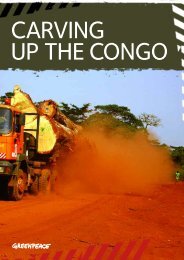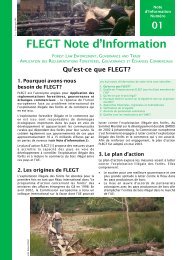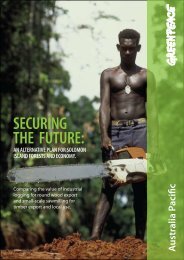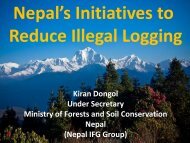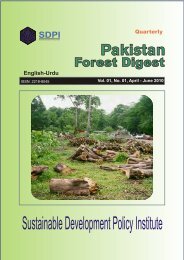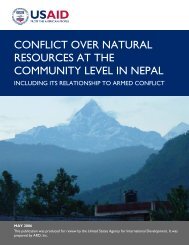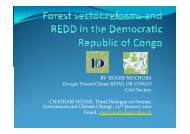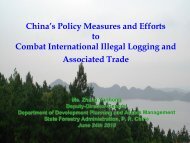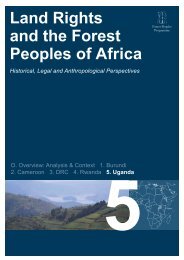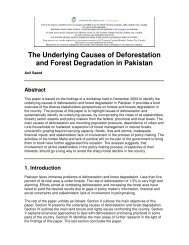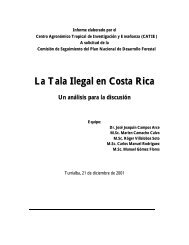CHAINSAW MILLING IN GHANA: CONTExT, DRIVERS ... - Fornis.net
CHAINSAW MILLING IN GHANA: CONTExT, DRIVERS ... - Fornis.net
CHAINSAW MILLING IN GHANA: CONTExT, DRIVERS ... - Fornis.net
- No tags were found...
Create successful ePaper yourself
Turn your PDF publications into a flip-book with our unique Google optimized e-Paper software.
Chainsaw milling in Ghana: context, drivers and impactsdegraded; 0.35 million ha have protected status (including hill and swamp sanctuaries,areas of high biodiversity and fire protection sites); the remainder is suitable fortimber production.Forests that are recovering from heavy logging but potentially productive are calledconvalescent forests; those that can be converted to other uses, including plantationforestry, are called conversion forests.Ghana used to be rich in forest resources, and forests were an important part of theeconomy (Box 1). Today, the country‘s forest resources are highly degraded. Wildfires,agriculture and indiscriminate logging (mainly through chainsaw milling) havecontributed to this process.B o x 1. Ghana’s forestsGhana’s deforestation rate is estimated to be approximately 65,000 ha per year. Thecountry has about 216 forest reserves that are managed for protection and timberproduction. Substantial timber resources exist outside these reserves (in so-calledoff-reserve areas). The current size of reserved high forest is 1.6 million ha. In thepast, at least half of the timber harvested came from off-reserve areas, although thishas declined in recent years (Hansen and Treue 2008).The formal timber industry contributes about 6% to Gross Domestic Product (GDP)and directly employs about 100,000 people. Between 2002 and 2007, Ghanaearned an average of GHC* 366 million annually from export of wood products.Timber is currently the fourth contributor to Ghana’s foreign exchange.The industry has installed a log processing capacity of about five million m 3 againstan official Annual Allowable Cut of two million m 3 .Ghana’s 1994 Forest and Wildlife Policy formalised a new emphasis on sustainable forestmanagement (SFM) and participation among stakeholders. It also includes specificguiding principles and strategies on rights of access to forests and the protection offorests and wildlife. The policy’s aim is the “conservation and sustainable developmentof the nation’s forest and wildlife resources for the maintenance of environmentalquality and perpetual flow of benefits to all segments of society.” As Kotey et al. (1998,80) observed, however: “The status quo is accepted; the owners of forest reserves arerecognised as having only ‘beneficiary rights’ and are defined as ‘clients’ for whom theForestry Department [now Commission] manages the reserves.”The forest sector is governed by several pieces of legislation — including theForestry Commission Act of 2005 (Act 543), the Plantations Development Fund Act (as*Note: At time of writing, 1 US$ = 1.4 GHC (Ghana cedi)2




